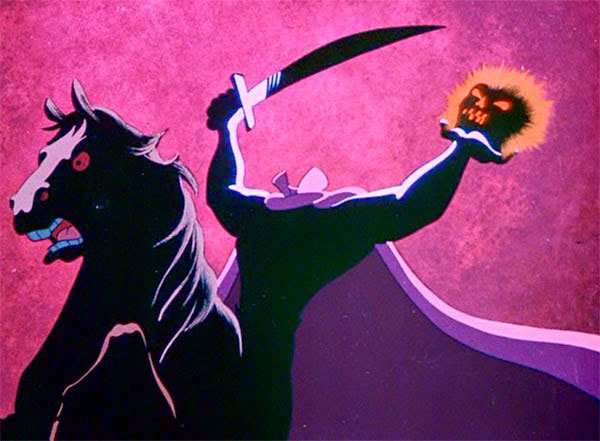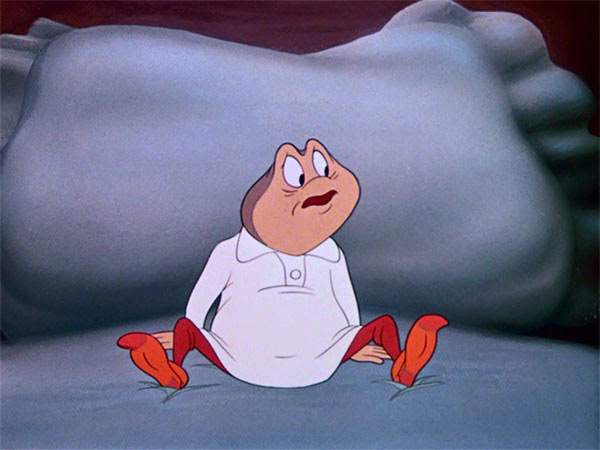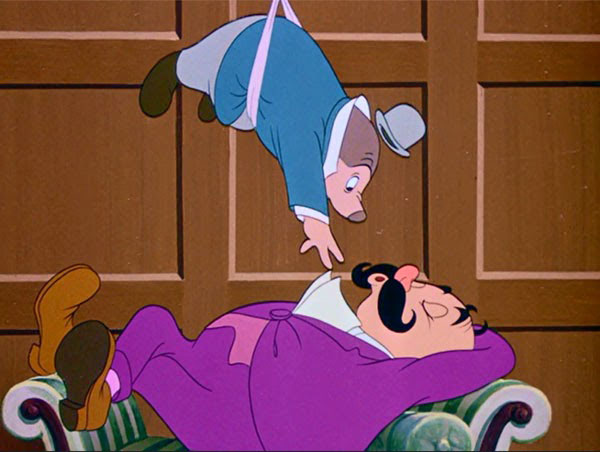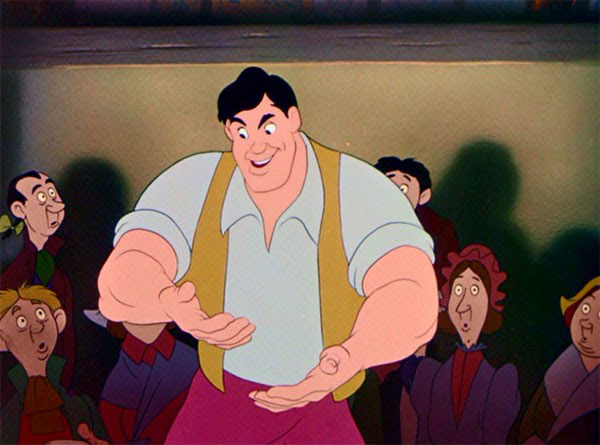
With the arrival of Disney Plus, it’s interesting to look back at Disney’s package films in the context of today’s releases. Combining multiple shorts into a feature would likely need a theme, which was lacking with some 1940s releases. A perfect example is The Adventures of Ichabod and Mr. Toad, which combines two stories originally planned as features. The title sounds like the two characters will hang out, but they don’t even meet for coffee in a highway diner. Brief live-action segments show the camera drifting among stacks of novels before settling on the title. It is a clever way to bring the tales together, though it’s just a device to sell the coherent whole.
It’s hard to separate my love for Mr. Toad’s Wild Ride from discussing the adaptation of Kenneth Grahame’s The Wind in the Willows. The attraction creates a similar tone and includes characters from this movie, but it isn’t a straight retelling. Winnie the Pooh has replaced the Florida version, which is sad but makes sense given that Toad is hardly a household name. He remains at Toad Hall at Disneyland, though I expect many riders have never seen this film. Would his popularity be different if the story was its own feature? I’m not so sure, especially given the shift after this film towards long-form stories with Cinderella in 1950.
Toad is an elusive playboy who parties and gets into mischief. His loyal friends Angus, Ratty, and Moley pick up the pieces and keep him out of trouble. Toad’s affliction is “motor mania”, which brings an insatiable obsession with cars. His pals confine him to bed in his room; they’re essentially performing an intervention for a drug addict. Toad must go cold turkey and sweat it out or his addiction will consume him.

The Dangers of Motor Mania
Unable to live without another fix, Toad escapes out his window and is subsequently arrested for stealing a car. He is an odd protagonist for a family movie. Should we admire his antics like a classic anti-hero? His fun-loving horse Cyril Proudbottom drives Toad to greater adventures, and they make a silly pair. Even so, I found myself identifying more with his straight-arrow friends.
The saving grace is the final act, a madcap heist to capture the deed to Toad Hall. He has turned the castle into a den of weasels that are letting it fall into disrepair. The inspired sequence has Toad and his friends trying to snag the deed from a sleeping Mr. Winkie, dodging knives, and scrambling to escape the weasels. The deed becomes a hot potato that briefly ends up in everyone’s hands during the chaos. Toad even employs a classic paper airplane trick to keep their pursuers on their toes. His skills with throwing them are a lot better than mine.
The near-constant action of the second half matches the chaos of Mr. Toad’s Wild Ride and involves all types of vehicles. In this type of world, it’s easy to see how Toad got his motor mania. The result is pretty forgettable, but it’s entertaining given the limited running time. With the attraction still operating in Disneyland, I suspect there have been conversations about a reboot film. A biopic of Grahame, Banking on Mr. Toad, is in the works, but Disney does not appear to be involved with the production.

Crooning in Colonial America
The Wind in the Willows is narrated by the great Basil Rathbone, who portrayed Sherlock Holmes in numerous films. He passes the reins for the American story to Bing Crosby; let the singing begin! We venture from mid-century England back to colonial America. Washington Irving’s The Legend of Sleepy Hollow is a familiar story with many variations. This version of Ichabod Crane is a tall and goofy guy, but he also charms the ladies. Brom Bones is his more athletic rival for the affections of Katrina van Tassel, but his chances are limited against Ichabod. All is not as it seems, however. Neither Ichabod nor Katrina is being honest, and he’s destined to face off with a supernatural villain that could mean his end.
Despite the 1790s setting, this film connects to the 1940s through Bing Crosby’s singing. Along with narrating and voicing Ichabod and Brom, he belts out several memorable tunes. The standout is “Headless Man”, which Brom sings to freak out the superstitious Ichabod at a Halloween party. It’s a clever bit of theater from the guy, who sees Katrina slipping out of reach.
There’s a similarity between Brom and Gaston from Beauty and the Beast. Both are strong and square-jawed yet can’t seem to connect with the girls. Brom seems nicer on the surface, but there are hints that he may be closely aligned with the Headless Horseman. There’s also a painful scene with Brom where he’s pursued by a less-attractive woman at the party. He ends up tossing her in the closet, and it’s played for comedy. This moment reminds us that we’re still in the ‘40s.

A Nightmarish Finale
The Legend of Sleepy Hollow is known for being one of Disney’s scarier cartoons, and I was freaked out by the Headless Horseman as a kid. Of course, I was afraid of a lot of things at that age. For me, the cackling laughter of Ichabod and his horse right before the Horseman arrives was still creepy today. There’s also a subtle hint that our hero was killed. That’s a pretty daring move for a film that’s primarily geared towards kids. There is no happy ending for anyone, unless you’re rooting for Brom. He’s either very lucky or played a hand in the ultimate result.
The highlight of The Adventures of Ichabod and Mr. Toad is the final sequence that begins with “Headless Man”. The tone shifts dramatically, and the shadows are solely designed to scare Ichabod. The Horseman animation stands out because his gliding movements contrast so sharply with the scrambling of his victim. What’s odd is the way that the set-up has little connection with the Horseman’s arrival. If we didn’t know anything about the story, there would be few hints that trouble was around the corner. It feels like a light-hearted yarn about two guys battling for a girl’s affection.
The jarring shift makes the end more effective and delivers quite a punch. It’s still an uneven result on the whole, but the finale reveals the potential for Disney animation going into the next decade. Taken on its own, The Legend of Sleepy Hollow is worth a viewing especially if you’re looking for some mild scares. Despite the limitations of this package film, it’s still worth checking out on Disney Plus to learn more about Disney’s output in the post-War era.
Other Movie Reviews
Davy Crockett: King of the Wild Frontier
This post contains affiliate links. Making any purchase through those links supports this site. See full disclosure.



Leave a Reply